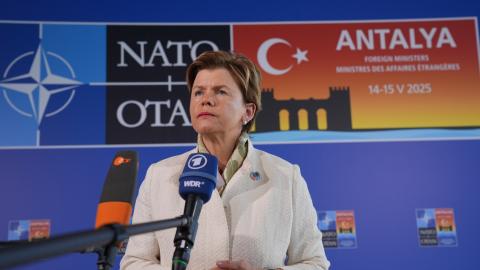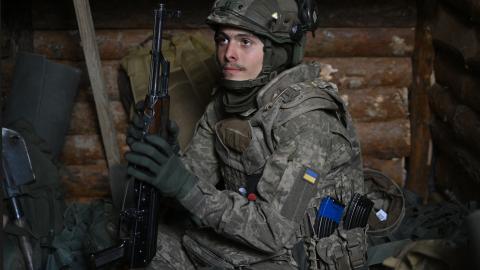Executive Summary
- The next phase of the war: Ahead of possible ceasefire talks in Istanbul, Russia is preparing to launch a large-scale summer offensive against Ukraine.
- Russian drone production drives heavy strikes: Russia struck Ukraine with approximately 2,500 Shahed loitering munitions in April.
- Drone warfare developments: Ukrainian units continued to deploy new drone systems and concepts of operations, including a drone-mounted grenade launcher.
1. Battlefield Assessment
Major parties to the war in Ukraine are preparing for possible ceasefire talks in Istanbul, offering some reason for optimism. But in the meantime, Russia’s military is gearing up for a large-scale summer offensive.
Russia is likely to targetSumy, Kharkiv, and Zaporizhzhia in its push. With ceasefire talks upcoming, the Kremlin may feel increased pressure to make battlefield gains. For all Moscow’s recent efforts, declassified defense intelligence reports from the United Kingdom indicate that in April 2025 the Russian military seized only 80 square miles of Ukrainian territory, a marginal increase from the gains it made in the preceding month.
Ukraine’s defenses near the crucial logistics hub of Pokrovsk have proven resilient. Despite a heavy Russian offensive push, Kyiv’s forces have kept the city from falling into enemy hands. Nonetheless, Russia has secured tactical gains in nearby areas, enveloping many of Ukraine’s defensive formations. With the Russian military generating an estimated 30,000 new troops per month—more than the standing armies of several North Atlantic Treaty Organization nations—Moscow can rotate its combat unitswhile maintaining its current personnel levels in Ukraine.
As last week’s edition of this report warned, military activityintensified on the Toretsk front, leaving mounting equipment losses and casualties. The Ukrainian Territorial Defense Forces’ 100th Motorized Brigade lost multiple armored vehicles to drone-equipped Russian forces, highlighting the danger of moving relatively large mechanized formations under enemy air surveillance. Other than Toretsk and Pokrovsk, Chasiv Yar, and the Orikhiv sector in southern Ukraine remained the most active conflict areas last week.
Russia also continued to pound Ukraine with Shahed drones, launching approximately 2,500 of the loitering munitions at Ukrainian cities in April. Kyiv’s air defense units saw only two days without a Shahed strike last month. Still, with a combination of kinetic systems and electronic defense measures, they intercepted 84 percent of these drones.
With its boosted production capacity, Russia will likely be able to target Ukraine with at least 2,000 drones per month for the rest of the year.
2. Drone Warfare Developments
Ukrainian intelligence sources reported that a yet unidentified Russian drone has been operating in the Sumy region of Ukraine. This fixed-wing drone appears to have a range of around 50 miles, video imagery recognition capabilities, artificial intelligence features, a seven-pound warhead, and a laser rangefinder. According to reports, the drone uses entirely imported parts.
Not to be outdone, Kyiv has also continued to innovate with its unmanned concepts. A drone warfare group of Ukraine’s Separate Presidential Brigade deployed a drone-mounted grenade launcher, marking another all-time first in this technology-driven war. The same Ukrainian unit has used shotgun-carrying drones in aerial duels with Russian unmanned systems. At scale, drone-launched grenades could prove effective against small units and trench systems.
In another notable engagement, the Russian 83rd Brigade used a fiber-optic-cable-controlled first-person-view (FPV) drone to penetrate anti-drone electronic warfare nets and attacka Ukrainian military vehicle along a protected road in the Sumy region. The lack of effective countermeasures against fiber-optic-cabled FPVs poses a major issue for Ukraine. Surprise attacks by these drones can penetrate anti-drone nets and strike important targets like troop movements and logistics columns.
Finally, Russian sources reported that Moscow has begun to rely on quickly manufacturable unmanned ground vehicles (UGVs) for land warfare. Both belligerents use UGVs in mined and heavily contested areas, mainly in logistics roles, to minimize casualties. This report will monitor whether the Russian military deploys these UGVs on the front lines in the coming weeks.
















